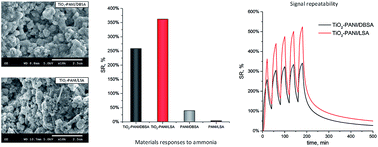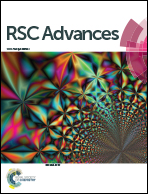Ammonia/amine electronic gas sensors based on hybrid polyaniline–TiO2 nanocomposites. The effects of titania and the surface active doping acid
Abstract
New ammonia and amine sensing materials based on hybrid polyaniline/titanium dioxide nanocomposites were synthesized by a one-pot chemical polymerization. Particular attention was paid to the influence of TiO2 nanoparticles and the surface active dopants on the structure–property relationship of the nanocomposites in terms of their morphology, composition, electrical and sensing properties. Dodecylbenzenesulfonic (DBSA) and lauryl sulfuric (LSA) acids were used as polyaniline dopants. The nanocomposites sensing properties were evaluated at different humidity levels when exposed to ammonia, methyl- and trimethylamine (0.2 ppm to 1 ppm). The materials demonstrated strong responses and high sensitivity to the gases with a quantification limit of 20 ppb for ammonia. The sensors are reversible and have short response times. However, the response magnitude depends on the dopant nature. The results were interpreted in terms of basicity and size of the analyte gas molecules.


 Please wait while we load your content...
Please wait while we load your content...